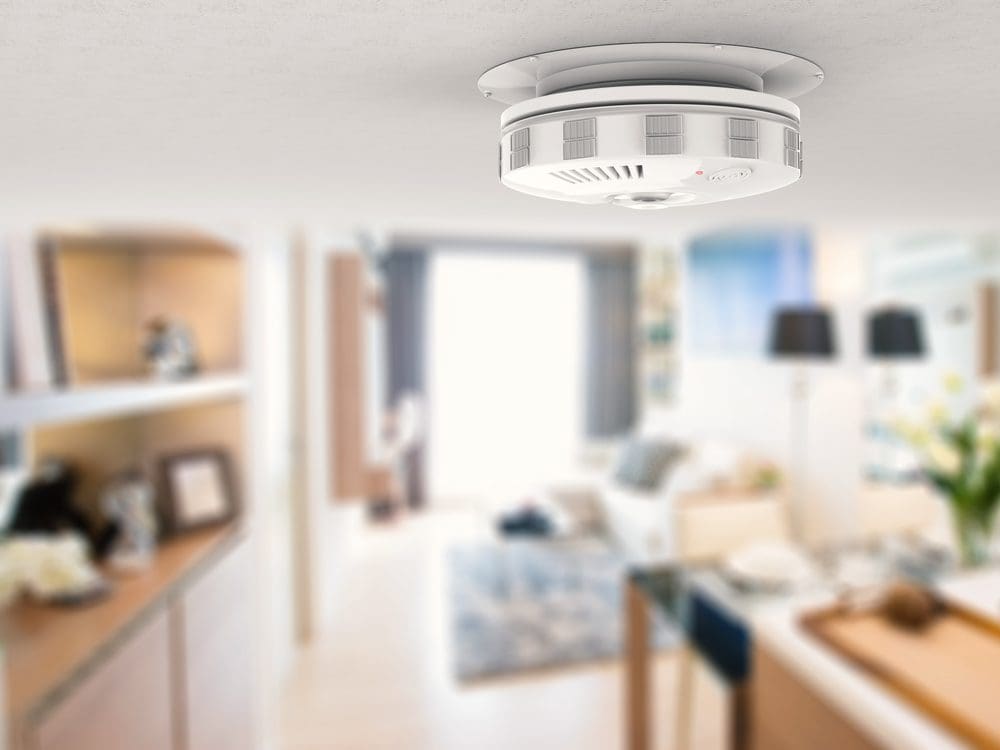
One of the most important things in your home is probably the least thought about—the carbon monoxide detector.
Every home and business should have a carbon monoxide detector to ensure the safety of their indoor environment. However, some people are unsure if they need one and where carbon monoxide may come from.
Here is your complete guide on carbon monoxide detectors.
Table of Contents
What Is Carbon Monoxide?
Carbon monoxide (CO) is a gas formed by the incomplete combustion of fuels. For example, it can be produced any time you turn on your gas stove or gas oven.
What Does Carbon Monoxide Smell Like?
Carbon monoxide is both odorless and colorless, making it nearly impossible to detect without a detector. Like many other gasses, carbon monoxide can be dangerous to breathe in.
Why Is Carbon Monoxide Dangerous?
According to the CDC, over 400 Americans pass away due to carbon monoxide poisoning each year. The reason it’s so dangerous is due to how carbon monoxide molecules interact with oxygen in your body. If CO molecules find their way into your lungs, they can displace oxygen in your body which leads to poisoning.
Common Carbon Monoxide Signs
- Heavy condensation on windows where new appliances were installed
- Soot or brownish-yellow stains near leaky appliances
- Stale, stuffy air with a lingering smell of something burning
- No upward draft in a chimney flue
- Soot falling in the fireplace
- Pilot light keeps going out
- Unusual gas smells (despite CO being odorless, it can be accompanied by other exhaust fumes)
- Yellow flame from your burner instead of clear or blue (not applicable for natural gas fireplaces)
Where Does Carbon Monoxide Come From in the House?
Carbon monoxide is a byproduct of burning materials. As such, any appliance or fixture in your home is capable of producing carbon monoxide. The reason you typically don’t have a CO problem in your home despite having appliances and fixtures that burn fuel is that they’re completely burning it. For example, if your pilot light was out or the flame was not sufficiently burning gas, that gas would build up and eventually find its way around your home.
Here are some places in your home that carbon monoxide may be coming from:
- Clothes dryers
- Water heaters
- Furnaces
- Boilers
- Fireplaces (both gas and wood burning)

What To Do if Carbon Monoxide Alarm Goes Off
Your carbon monoxide detector is going off, but what is causing it, and how should you respond? In most cases, it’s going off because of a dangerous level of CO in your home. Don’t ignore the alarm. Take extreme caution and perform the following steps:
- Step 1: Get all people and animals out of the home and into the fresh air.
- Step 2: Call 911 to report the CO alarm in your home is going off.
- Step 3: Do not reenter the home unless given clearance by an authority—even if the alarm stops going off.
- Step 4: Allow first responders to sweep your home for a carbon monoxide leak or source. From there, they will determine if it’s safe to return to your home.
How to Test for Carbon Monoxide
Occasionally testing your carbon monoxide detector is an easy way to ensure the safety of your home. Your CO detector should have a test button on its front panel. Press it, which should trigger the alarm. Listen for two quick beeps, a flash, or both to confirm it works.
If the test does not work the first time, try again. If it still doesn’t work, you should get a new carbon monoxide detector.
How to Reset Carbon Monoxide Alarm
To reset the CO detector, find its reset button (usually on the front panel). Press and hold for about 10 seconds. Then, release the reset button and listen for a beep, flash, or both.
If the reset does not work the first time, try again. If it still doesn’t work, you should get a new carbon monoxide detector.
Where to place carbon monoxide detectors
Carbon monoxide alarms should be placed on each level of your home, ideally in areas with fuel-burning appliances such as the kitchen, the garage, the basement, or the laundry room.
Stay On Top Of Heating Appliance Issues
Malfunctioning or inefficient heating appliances like furnaces, boilers, and more can lead to dangerous CO build-up in your home. Having a carbon monoxide detector in your home is your best bet at avoiding fatal consequences from CO poisoning. But a detector will not fix the underlying issues—broken appliances.
For that—call HD Air technicians to inspect, repair, or install new heating systems in your home. Our professional technicians can diagnose problems with your heating system and provide fast and reliable service.
Prefer to schedule an appointment online? Click on the EZ Book Online button below.



